GIVEAWAY!
Enter to WIN a 3 gallon, Heated Poultry Nipple Drinker, courtesy of Premier 1 Supplies!
Features:
*Built-in thermostat turns heating element on at 40°F, off at 60°F
*Provides clean water to the flock year-round with removable electric cord with detachable, 16 foot, grounded electrical cord
*Lid shape prevents birds from perching on waterer
*Heavy-duty handle for carrying and hanging
* 3 recessed nipples with drip-catch design
*16′ electrical cord allows more flexibility in placement
*Detachable 16 ft. grounded electrical cord for non-winter use
*3 gallon capacity
* hinged quick-fill cap on lid!
Entry details below!
Access to clean water in clean containers is vital to chicken health and egg production. Depriving them of water for even a few hours can halt egg production for weeks.
Water is Necessary for Metabolism
Water is involved in every aspect of poultry metabolism. It plays important roles in regulating body temperature, digesting food, and eliminating body wastes. At normal temperatures, poultry consume at least twice as much water as feed. When heat stress occurs, water consumption will double or quadruple."
Bottles of ice keep water cold in hot weather
Water is the Essential Nutrient
Water is often taken for granted, and yet it is probably the most essential nutrient. Water is by far the single constituent of the body, and, in general, represents about 70% of total body weight. Access to water is very important, and a lack of water for several hours will probably cause a decline in egg production. Hens are more sensitive to a lack of water than a lack of feed."
"Water in the crop softens the feed so that digestion can occur. Without the water, dry feed forms clumps in the crop that can press on the bird's carotid artery, decreasing blood flow to the brain. This can cause paralysis and possible death. Poultry anatomy complicates matters. A split in the upper hard palate of the beak allows air into the nasal passages and prevents the chicken from forming a vacuum in its mouth. Hens, therefore, rely on gravity to draw water into the crop."
Amount of Water Needed
"Water and food consumption rates are interdependent, so reduced water intake can also lead to reduced food intake. There are other factors that affect water intake, with temperature being the most obvious one. For example, chickens drink between 30-50% more water when the environmental temperature is above 32oC compared with when it is 21oC. Water intake is also affected by the type of drinkers used. The rule of thumb for water intake is that water intake is usually 1.5 to 2 times feed intake."
Poultry nipple waterers are without a doubt the best way to ensure the consistent delivery of clean water to chickens. Dr. Mike Petrik, aka: Mike, The Chicken Vet, a practicing chicken veterinarian in Canada, shared his thoughts with me about poultry nipple drinkers:
"NOBODY who is raising chickens professionally has used cups, bell drinkers or troughs in the past 25 years….nipples have been used successfully on literally billions of chickens. The professional farmers across North America have made nipple drinkers the standard for all chickens and many turkeys (who are a little "slow" when it comes to finding water…even if it's right in front of them).
In fact, as a vet, I recommend that everyone raising hens change from open water sources to nipple drinkers….the hens get plenty of water, and the disease reduction is so striking that there is no doubt which is better."
A research paper published in the scientific journal "Animal Welfare" in 2008* compared broiler chickens' preferences in different water sources, and had this to say: "These results further support the hypothesis that chickens find nipple drinkers an acceptable means of drinking, provided they are at a height that the birds find comfortable and convenient. When nipple drinkers are presented at the same height as a bowl of water, then nipple drinkers are either preferred or there is no significant preference. The importance of comfort and ease of drinking is emphasized by the finding that when both the bowl and nipples are raised and the birds have to stretch to drink from either one, stretching to peck at nipple drinker is preferred to stretching to drink at a highly unusual angle from a bowl."
Another study on the biomechanics of drinking in laying hens from the Journal Zoomorphology in 1992** shows clearly that hens develop different body movements to drink from different sources of water, such as drinking droplets (such as found on a nipple drinker), or by immersing the beak and scooping water (as would happen in open drinkers). They found that developing these behaviors was not difficult or unnatural for birds, since they regularly will drink water that is suspended on leaves or blades of grass.
Basically, as long as you do not let your hens run out of water and make sure they are aware of the water source both nipple drinkers and open waterers provide plenty of water availability. You need to have about 3″ of open waterer space per hen as a minimum and 1 nipple per 9 hens, again as a minimum. The advantage of a nipple system is that it is quite resistant to bacterial growth, unlike the septic soup that most open waterers quickly become. I cannot recommend strongly enough that backyard chicken keepers consider using a nipple watering system for their hens, if it is practical to do so.
Make sure your hens get used to drinking out of nipples before you remove the open waterers, but once they are accustomed to drinking from nipples, they will be at far less risk of disease. Think of it this way….in third world countries, the most significant health improvements are gained when a village is able to drink water from a contained system such as a well, rather than from an open system such as a river or pond….your hens will respond similarly." Dr. Mike Petrik, DVM, MSc, The Chicken Vet
Frequently Asked Questions, Answered:
Birds of different sizes and heights can all use nipple drinkers. If necessary for bantam breeds, position some bricks or a block of wood under a couple of the drippers to allow the smaller birds to reach them easily.
A maximum of 3 or 4 birds per nipple is recommended. They tend not to drink all at the same time, so there's definitely some wiggle room in the estimate.
3 gallon, Heated Poultry Nipple Drinker available HERE.
POULTRY NIPPLE WATERER TRAINING
Because chickens are prey animals, they are predictably wary of change; consequently, most require training to use a new poultry nipple drinker system. While some flocks are reluctant to use poultry nipple drinkers, others take to them immediately and instinctively. Patience and consistency are key.
While training, it is imperative that the chickens not have access to any other water source! It can be helpful to confine free-range chickens to the run during training so they cannot actively avoid being trained. Introducing a nipple drinker should only be done in temperate weather in case there is a learning curve involved. Do not initiate training during freezing temperatures, nor hot weather when chickens rely on water to maintain their body temperatures.
Some find it helpful to attach a rubber band in a slip knot formation around one nipple on the end of the unit to allow a stream of dripping water to draw the chickens' attention to it. Very quickly they learn that cool water is dispensed from the nipples and the rubber band can be removed.
Once a new drinker is in place, tap on the stainless steel pin with your finger to allow water to drip out until a flock member comes over to investigate. They will. Curiosity will lead to inspection of the water source. Sometimes this is all the training necessary! Often, once one bird figures out the system, they train the others. Another helpful tip for less adventurous birds is to pick them up tap their beaks to the stainless steel pin. Once a droplet of water hits their beak, they then know water comes from the pin.
Again, keep all other water sources in accessible during training!
Regardless of the drinking system used, chickens will always opt to drink from a hose, trough, or the nastiest mud puddle available. This does NOT mean they are dying of thirst! It is simply a chicken truism. Don't worry about it. Chickens are healthier when their drinking water and drinking vessel are clean all day, every day; using poultry nipple drinkers are the best, most efficient way to ensure consistently clean water to a flock of backyard chickens.
to enter THE GIVEAWAY:
1) FOLLOW me on Facebook
2) COMMENT below this article.
Eligibility limited to US residents only. Giveaway ends 10/8/23 9pm EST.
Winners chosen by random drawing from eligible entries and notified on my Facebook page in a post and via email and/or here.
ADVISORY: I will NEVER MESSAGE you privately or on Facebook messenger! You should NEVER give your credit card information to anyone claiming you won something. Scammers online are everywhere.
Citations/sources/further reading:
Welfare implications of nipple drinkers for broiler chickens, E Houldcroft, C Smith, R Mrowicki, L Headland, S Grieveson, TA Jones and MS Dawkins* Department of Zoology, University of Oxford, South Parks Road, Oxford OX1 3PS, UK, © 2008 Universities Federation for Animal Welfare The Old School, Brewhouse Hill, Wheathampstead, Hertfordshire AL4 8AN, UK Animal Welfare 2008, 17: 1-10 ISSN 0962-7286
Flexibility of the drinking mechanism in adult chickens (Gallus gallus) (Aves), J. Heidwaller, J.A. van loon, and G.A., Zweers Animal Morphology, Zoological Laboratory, University of Leiden, Kaiserstraat 63, NL-2300 RA Leiden, The Netherlands, Zoomorphology (1992) 111-: 141-159
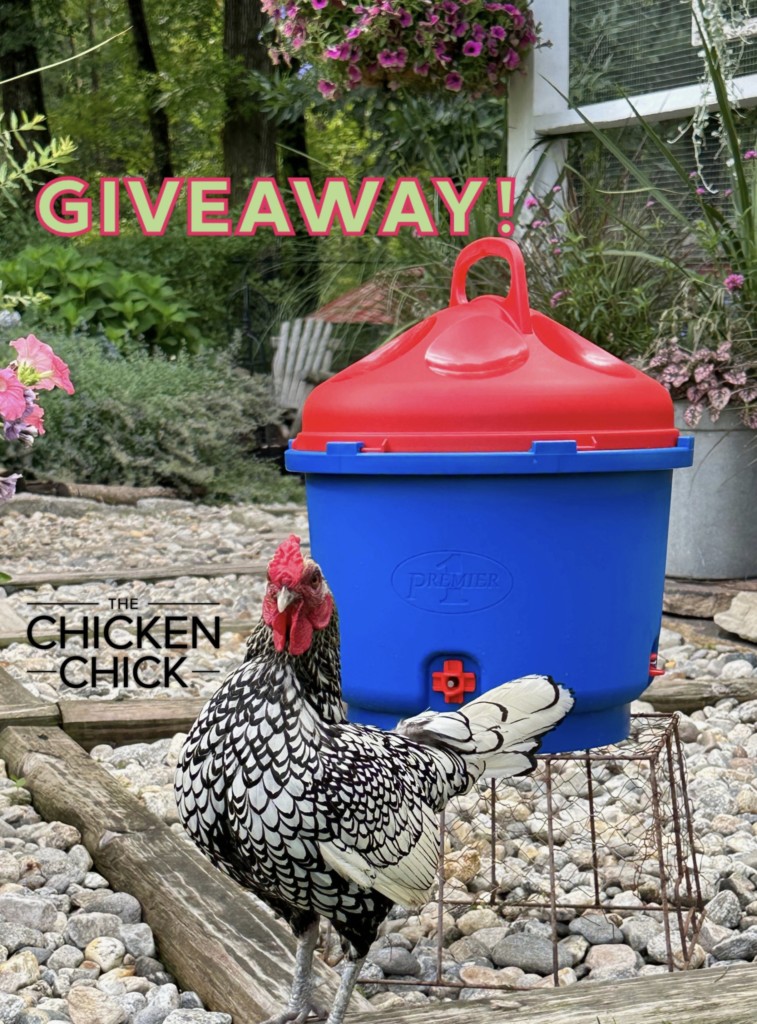
Kathy Shea Mormino
Affectionately known internationally as The Chicken Chick®, Kathy Shea Mormino shares a fun-loving, informative style to raising backyard chickens. …Read on


shop my SPONSORS
GIVEAWAY!
Enter to WIN a 3 gallon, Heated Poultry Nipple Drinker, courtesy of Premier 1 Supplies!
Features:
*Built-in thermostat turns heating element on at 40°F, off at 60°F
*Provides clean water to the flock year-round with removable electric cord with detachable, 16 foot, grounded electrical cord
*Lid shape prevents birds from perching on waterer
*Heavy-duty handle for carrying and hanging
* 3 recessed nipples with drip-catch design
*16′ electrical cord allows more flexibility in placement
*Detachable 16 ft. grounded electrical cord for non-winter use
*3 gallon capacity
* hinged quick-fill cap on lid!
Entry details below!
Access to clean water in clean containers is vital to chicken health and egg production. Depriving them of water for even a few hours can halt egg production for weeks.
Water is Necessary for Metabolism
Water is involved in every aspect of poultry metabolism. It plays important roles in regulating body temperature, digesting food, and eliminating body wastes. At normal temperatures, poultry consume at least twice as much water as feed. When heat stress occurs, water consumption will double or quadruple."
Bottles of ice keep water cold in hot weather
Water is the Essential Nutrient
Water is often taken for granted, and yet it is probably the most essential nutrient. Water is by far the single constituent of the body, and, in general, represents about 70% of total body weight. Access to water is very important, and a lack of water for several hours will probably cause a decline in egg production. Hens are more sensitive to a lack of water than a lack of feed."
"Water in the crop softens the feed so that digestion can occur. Without the water, dry feed forms clumps in the crop that can press on the bird's carotid artery, decreasing blood flow to the brain. This can cause paralysis and possible death. Poultry anatomy complicates matters. A split in the upper hard palate of the beak allows air into the nasal passages and prevents the chicken from forming a vacuum in its mouth. Hens, therefore, rely on gravity to draw water into the crop."
Amount of Water Needed
"Water and food consumption rates are interdependent, so reduced water intake can also lead to reduced food intake. There are other factors that affect water intake, with temperature being the most obvious one. For example, chickens drink between 30-50% more water when the environmental temperature is above 32oC compared with when it is 21oC. Water intake is also affected by the type of drinkers used. The rule of thumb for water intake is that water intake is usually 1.5 to 2 times feed intake."
Poultry nipple waterers are without a doubt the best way to ensure the consistent delivery of clean water to chickens. Dr. Mike Petrik, aka: Mike, The Chicken Vet, a practicing chicken veterinarian in Canada, shared his thoughts with me about poultry nipple drinkers:
"NOBODY who is raising chickens professionally has used cups, bell drinkers or troughs in the past 25 years….nipples have been used successfully on literally billions of chickens. The professional farmers across North America have made nipple drinkers the standard for all chickens and many turkeys (who are a little "slow" when it comes to finding water…even if it's right in front of them).
In fact, as a vet, I recommend that everyone raising hens change from open water sources to nipple drinkers….the hens get plenty of water, and the disease reduction is so striking that there is no doubt which is better."
A research paper published in the scientific journal "Animal Welfare" in 2008* compared broiler chickens' preferences in different water sources, and had this to say: "These results further support the hypothesis that chickens find nipple drinkers an acceptable means of drinking, provided they are at a height that the birds find comfortable and convenient. When nipple drinkers are presented at the same height as a bowl of water, then nipple drinkers are either preferred or there is no significant preference. The importance of comfort and ease of drinking is emphasized by the finding that when both the bowl and nipples are raised and the birds have to stretch to drink from either one, stretching to peck at nipple drinker is preferred to stretching to drink at a highly unusual angle from a bowl."
Another study on the biomechanics of drinking in laying hens from the Journal Zoomorphology in 1992** shows clearly that hens develop different body movements to drink from different sources of water, such as drinking droplets (such as found on a nipple drinker), or by immersing the beak and scooping water (as would happen in open drinkers). They found that developing these behaviors was not difficult or unnatural for birds, since they regularly will drink water that is suspended on leaves or blades of grass.
Basically, as long as you do not let your hens run out of water and make sure they are aware of the water source both nipple drinkers and open waterers provide plenty of water availability. You need to have about 3″ of open waterer space per hen as a minimum and 1 nipple per 9 hens, again as a minimum. The advantage of a nipple system is that it is quite resistant to bacterial growth, unlike the septic soup that most open waterers quickly become. I cannot recommend strongly enough that backyard chicken keepers consider using a nipple watering system for their hens, if it is practical to do so.
Make sure your hens get used to drinking out of nipples before you remove the open waterers, but once they are accustomed to drinking from nipples, they will be at far less risk of disease. Think of it this way….in third world countries, the most significant health improvements are gained when a village is able to drink water from a contained system such as a well, rather than from an open system such as a river or pond….your hens will respond similarly." Dr. Mike Petrik, DVM, MSc, The Chicken Vet
Frequently Asked Questions, Answered:
Birds of different sizes and heights can all use nipple drinkers. If necessary for bantam breeds, position some bricks or a block of wood under a couple of the drippers to allow the smaller birds to reach them easily.
A maximum of 3 or 4 birds per nipple is recommended. They tend not to drink all at the same time, so there's definitely some wiggle room in the estimate.
3 gallon, Heated Poultry Nipple Drinker available HERE.
POULTRY NIPPLE WATERER TRAINING
Because chickens are prey animals, they are predictably wary of change; consequently, most require training to use a new poultry nipple drinker system. While some flocks are reluctant to use poultry nipple drinkers, others take to them immediately and instinctively. Patience and consistency are key.
While training, it is imperative that the chickens not have access to any other water source! It can be helpful to confine free-range chickens to the run during training so they cannot actively avoid being trained. Introducing a nipple drinker should only be done in temperate weather in case there is a learning curve involved. Do not initiate training during freezing temperatures, nor hot weather when chickens rely on water to maintain their body temperatures.
Some find it helpful to attach a rubber band in a slip knot formation around one nipple on the end of the unit to allow a stream of dripping water to draw the chickens' attention to it. Very quickly they learn that cool water is dispensed from the nipples and the rubber band can be removed.
Once a new drinker is in place, tap on the stainless steel pin with your finger to allow water to drip out until a flock member comes over to investigate. They will. Curiosity will lead to inspection of the water source. Sometimes this is all the training necessary! Often, once one bird figures out the system, they train the others. Another helpful tip for less adventurous birds is to pick them up tap their beaks to the stainless steel pin. Once a droplet of water hits their beak, they then know water comes from the pin.
Again, keep all other water sources in accessible during training!
Regardless of the drinking system used, chickens will always opt to drink from a hose, trough, or the nastiest mud puddle available. This does NOT mean they are dying of thirst! It is simply a chicken truism. Don't worry about it. Chickens are healthier when their drinking water and drinking vessel are clean all day, every day; using poultry nipple drinkers are the best, most efficient way to ensure consistently clean water to a flock of backyard chickens.
to enter THE GIVEAWAY:
1) FOLLOW me on Facebook
2) COMMENT below this article.
Eligibility limited to US residents only. Giveaway ends 10/8/23 9pm EST.
Winners chosen by random drawing from eligible entries and notified on my Facebook page in a post and via email and/or here.
ADVISORY: I will NEVER MESSAGE you privately or on Facebook messenger! You should NEVER give your credit card information to anyone claiming you won something. Scammers online are everywhere.
Citations/sources/further reading:
Welfare implications of nipple drinkers for broiler chickens, E Houldcroft, C Smith, R Mrowicki, L Headland, S Grieveson, TA Jones and MS Dawkins* Department of Zoology, University of Oxford, South Parks Road, Oxford OX1 3PS, UK, © 2008 Universities Federation for Animal Welfare The Old School, Brewhouse Hill, Wheathampstead, Hertfordshire AL4 8AN, UK Animal Welfare 2008, 17: 1-10 ISSN 0962-7286
Flexibility of the drinking mechanism in adult chickens (Gallus gallus) (Aves), J. Heidwaller, J.A. van loon, and G.A., Zweers Animal Morphology, Zoological Laboratory, University of Leiden, Kaiserstraat 63, NL-2300 RA Leiden, The Netherlands, Zoomorphology (1992) 111-: 141-159




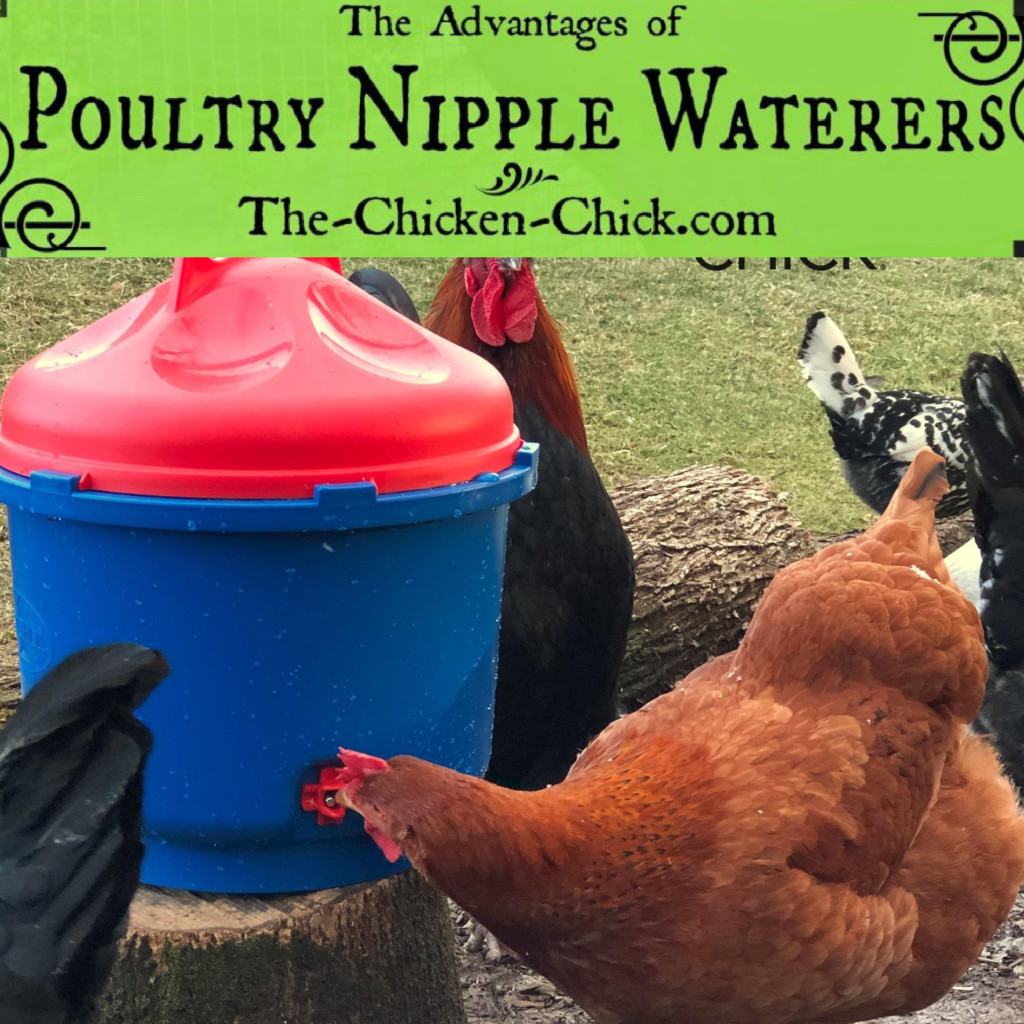

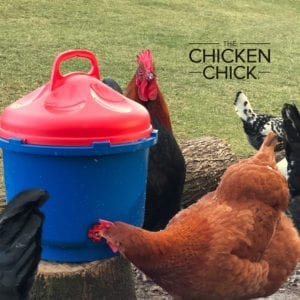

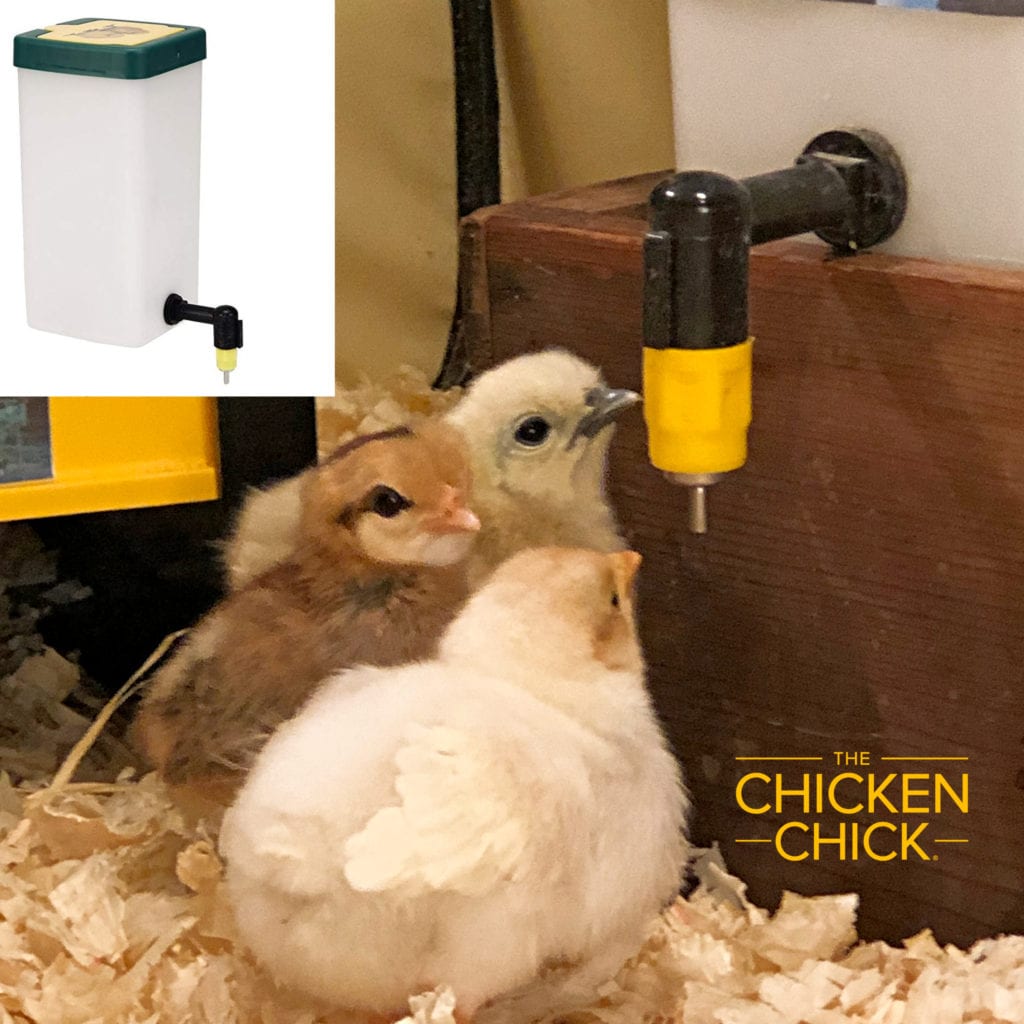

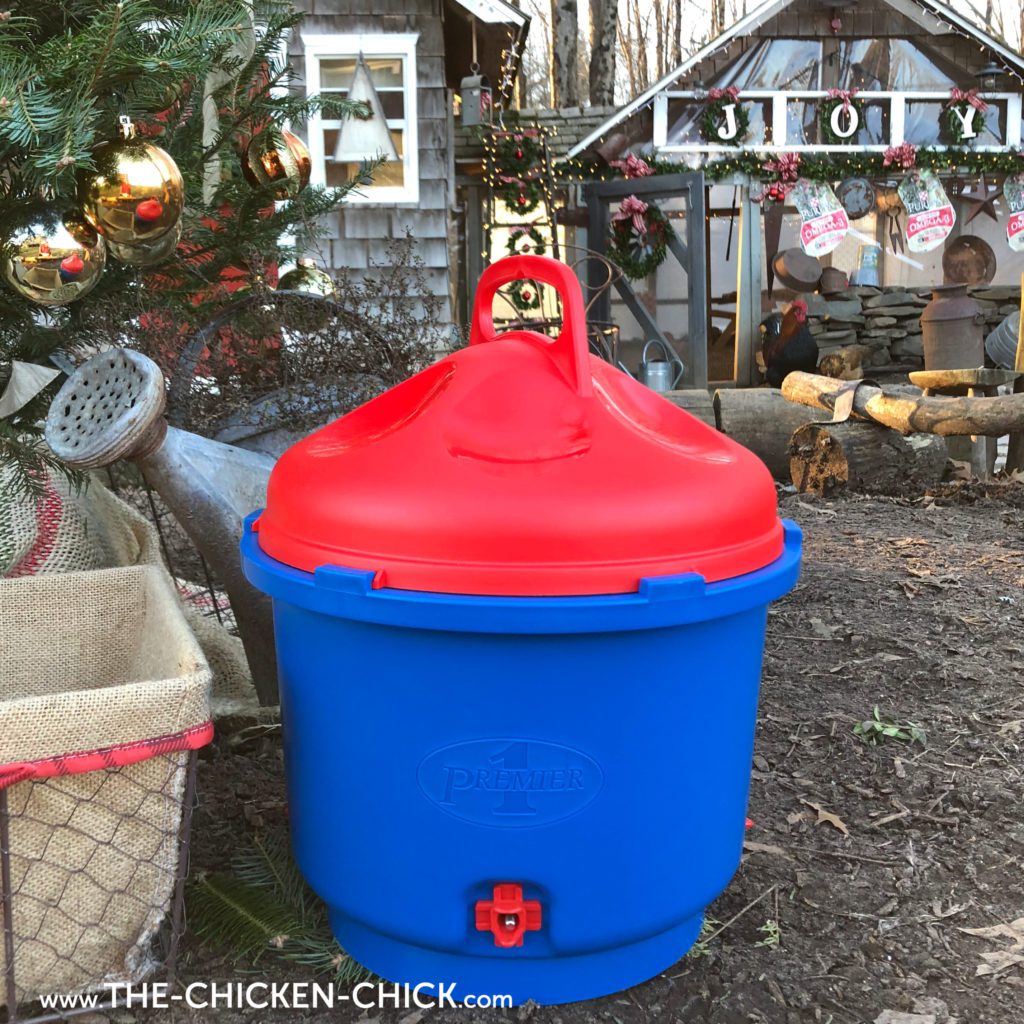























My girls (and boys) would be thrilled to have this waterer this winter!
They would be perfect for my 12 new babies that are due to hatch around the first week of March! Good luck to everyone!! :)
you are brilliant. Love these. Definately have to try it.
How well do ducks use the nipples? I have adult chickens and 3 week old chicks. And in 2 weeks ducklings are expected.
Now we have chicks again and your dealing with the poop , bedding , spilled water and everything in between. Would be so good to start them on a system that's cleaner for them and less mess for me. Id love to have the fountain for all our girls. Im constantly changing waters daily. Even if I don't win, its something that's on my list to make our chickens life better.
Our peeps would